Lighting Guide

Finishes and Materials
We like to think of lighting as the jewelry of the room. With all the technicals and measurements sorted, it’s time to bring some flair to your selection. Keep in mind that the finish and materiality of your light fixtures are about more than looks—they affect how the light is shaded or reflected in the room. As you shop, picture the fixture in your space at different times of day and consider how it works as a part of the whole.

Ceramic
Earthy and grounded, ceramic lighting lets you bring a sculptural touch, usually in versatile neutral tones or sleek glazed finishes.
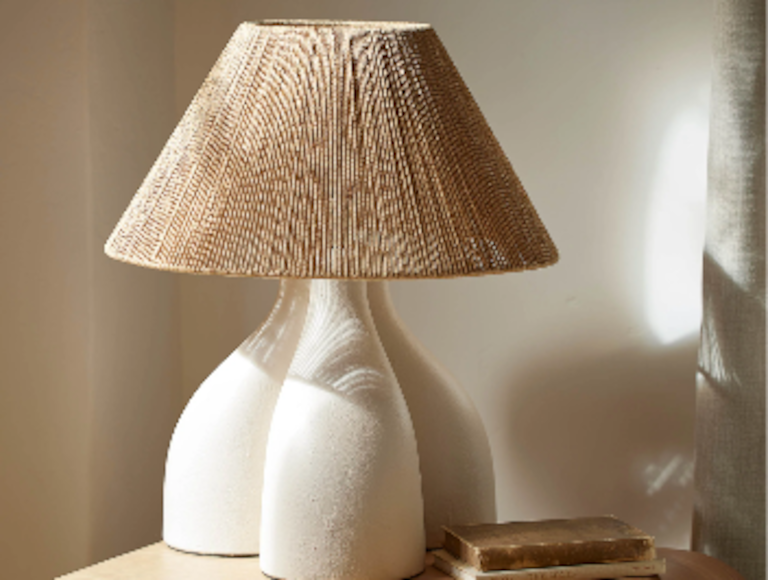

Stone
From carved marble fixtures to alabaster shades, stone lighting offers elemental elegance.
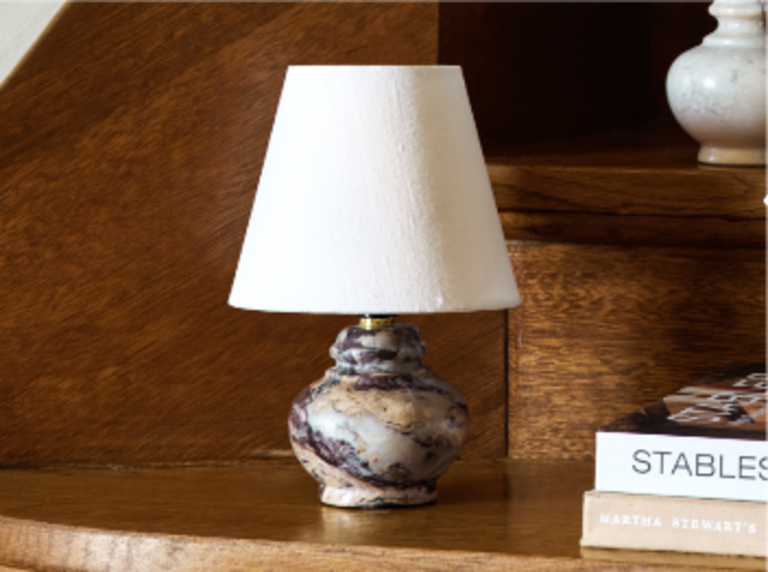

Wood
Wood lamps and light fixtures are the perfect way to bring an unexpected touch of organic warmth to your decor.
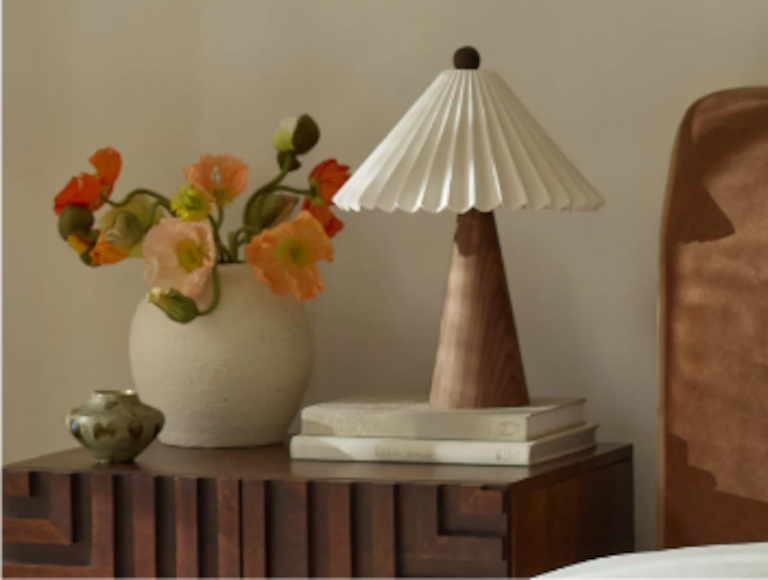

Woven
Set for coastal edits or cottage charm, woven lighting seems to be always on-trend yet never out of style, a great way to layer texture.
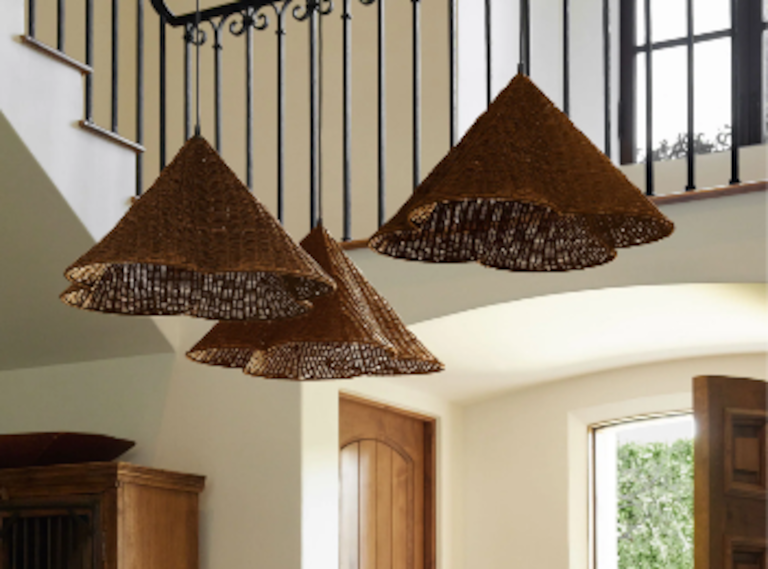

Glass
Glass shades offer timeless versatility, from the clear glass domes that let light pour through to the milky warmth of opal glass globes.
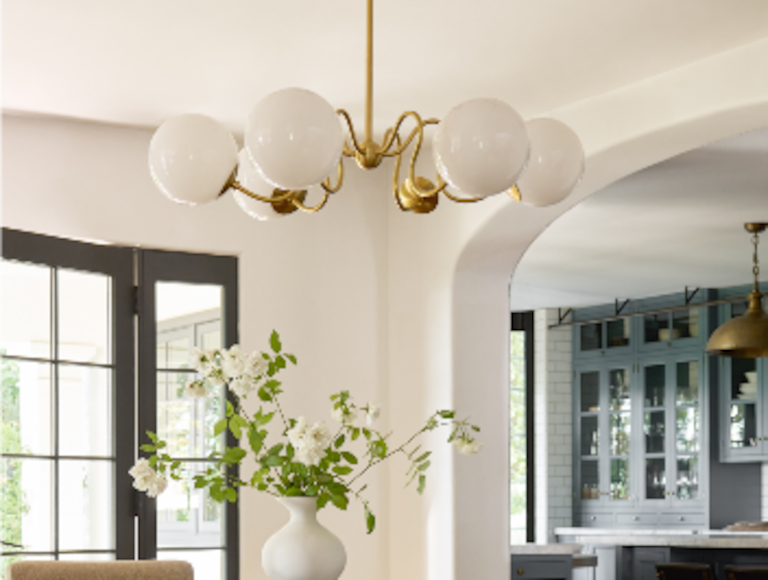

Metal
Metal light fixtures offer sleek appeal in a variety of styles and finishes, from antique to modern. Metal shades are great for directing light, think uplight sconces or dome pendants.
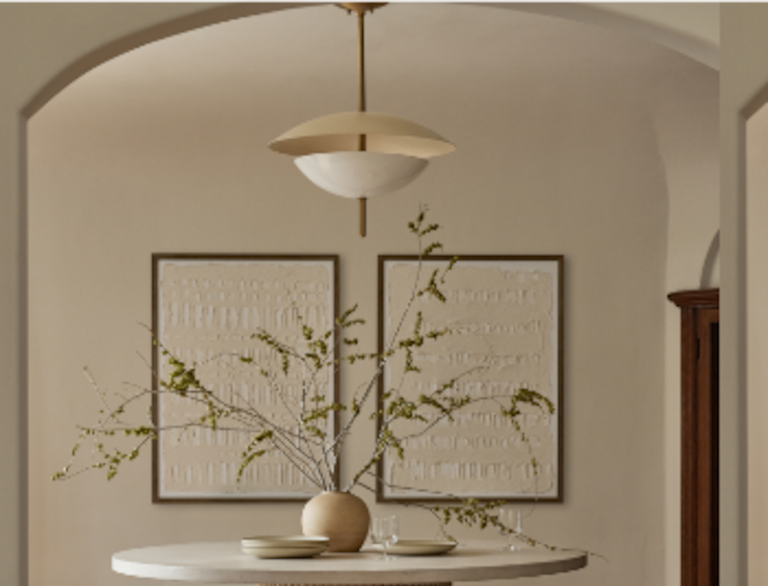
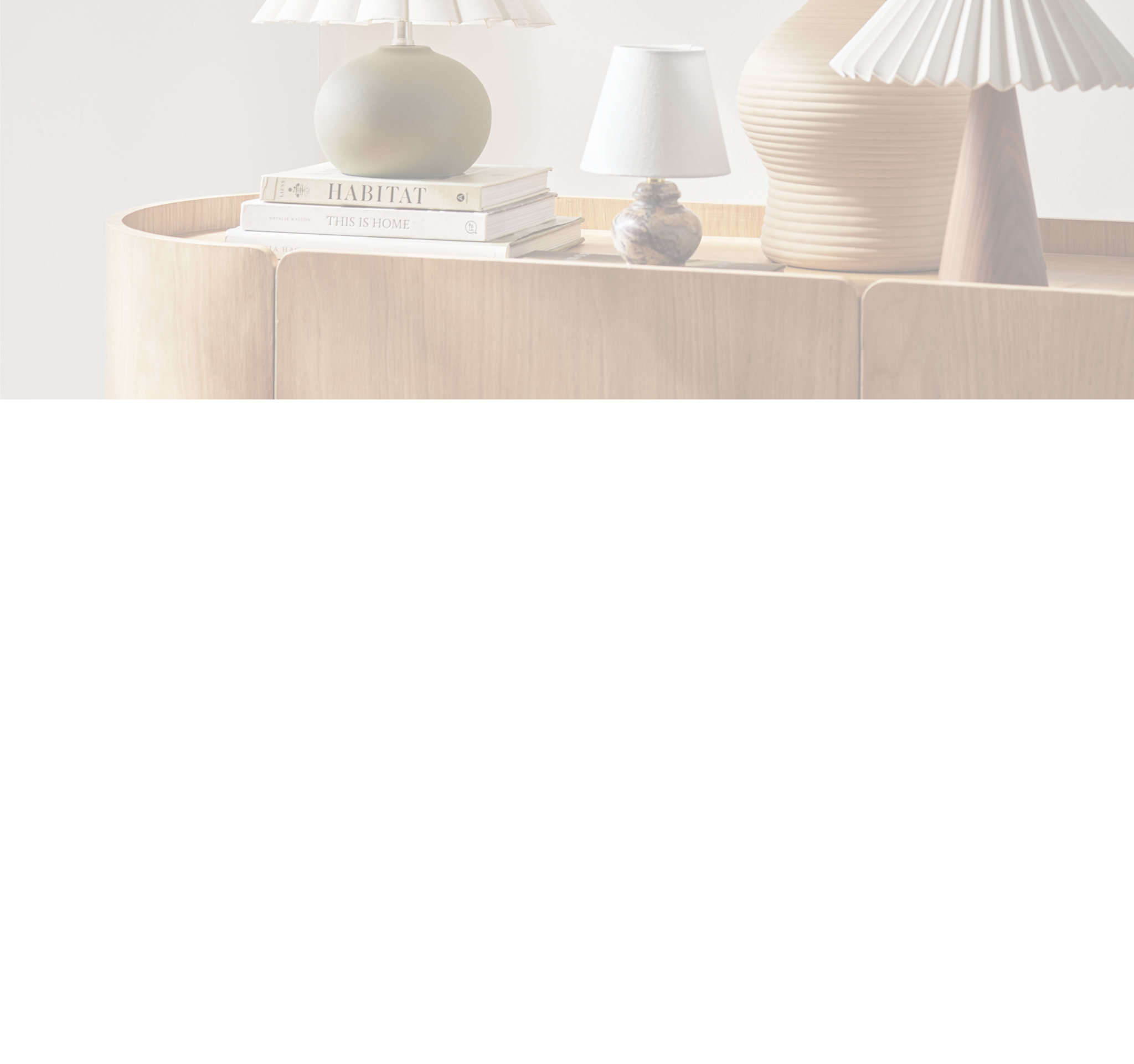
QUICK LINKS

BEDROOM LIGHTING

LIVING ROOM LIGHTING

DINING ROOM LIGHTING

DELIVERY

FAQs
Our mission here at Lulu and Georgia is to bring beauty into your home. Your home is the crucial part of that statement. We want to help you properly incorporate our products into your design so you can love how they look and feel. A well-lit space has the power to transform the ambience of your home completely. When it comes to lighting, we prioritize both form and function. While lighting serves a crucial purpose, it doesn't have to be solely practical. Light fixtures like lamps, chandeliers, and sconces can act as the "jewelry" of a room, adding a sculptural touch or introducing new materials. We begin by considering the three primary sources of light that every space should incorporate: ambient, task, and accent lighting.
The Lighting Guide
CHANDELIER LIGHTING
Chandeliers are ceiling light fixtures that feature multiple bulbs. The design of chandeliers can range from ornate and elegant to sleek and modern. We commonly utilize chandeliers in bedrooms, living rooms, dining rooms, and entryways. The size of the chandelier should be proportionate to the overall dimensions of your space and the height of your ceilings. See more in our measurements section.
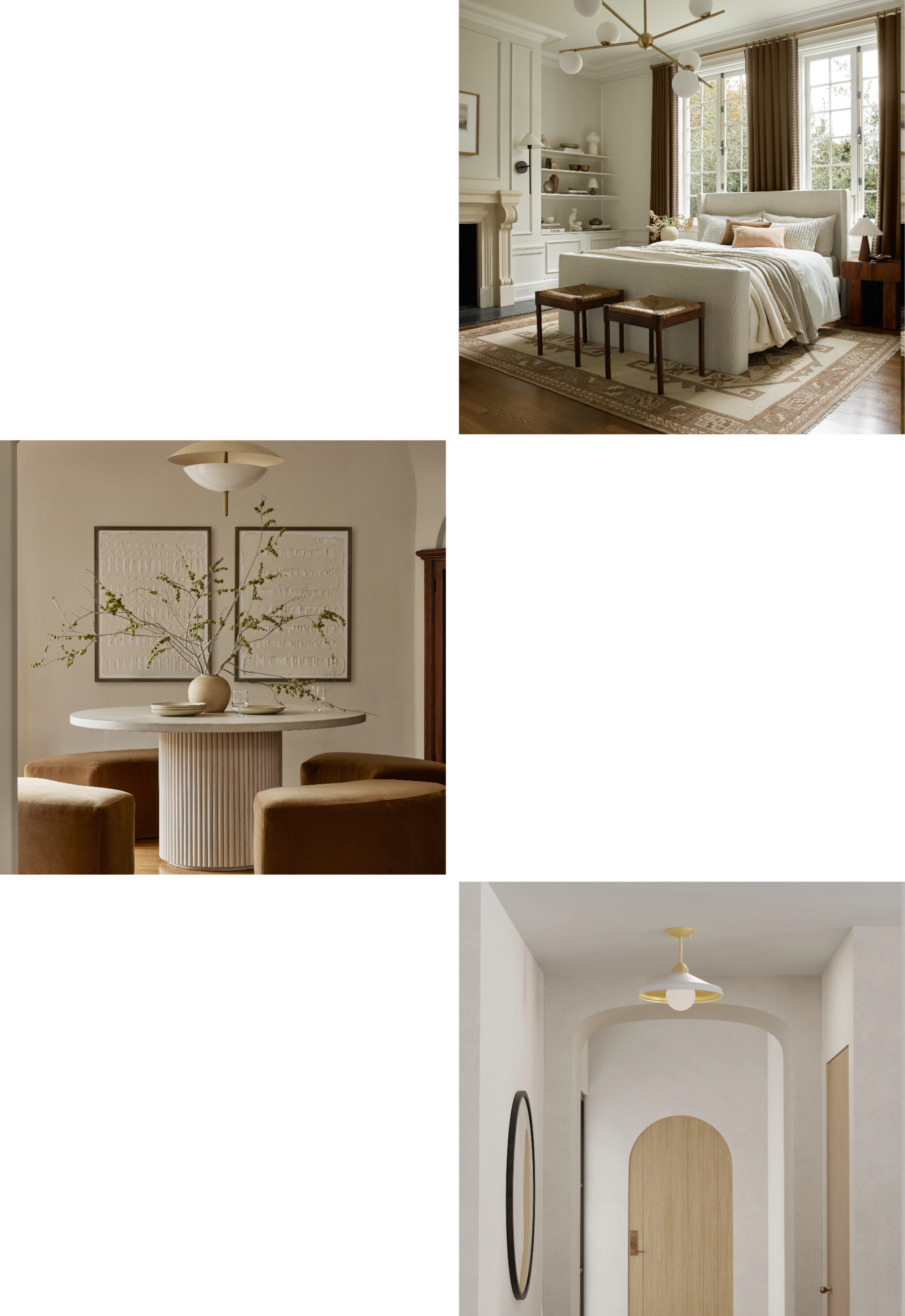
PENDANT LIGHTING
Pendant lights are typically single-bulb fixtures that hang from the ceiling. They share similarities with chandeliers in terms of usage but tend to be smaller in scale, making them versatile for nearly any area of your home, including the kitchen and bathrooms.
FLUSH MOUNT LIGHTING
Flush mounts differ from chandeliers and pendants as they aren’t suspended from the ceiling. Instead, they sit flush against it. Flush mounts are particularly suitable for spaces with lower ceilings, providing practical illumination without sacrificing headroom.
Ambient Lighting
Ceiling lighting falls under the ambient lighting category. We recommend incorporating a ceiling fixture in every room if possible. Ceiling lighting serves a dual purpose: providing ample illumination and creating visual impact.
Accent and Task Lighting
Ceiling lighting falls under the ambient lighting category. We recommend incorporating a ceiling fixture in every room if possible. Ceiling lighting serves a dual purpose: providing ample illumination and creating visual impact.
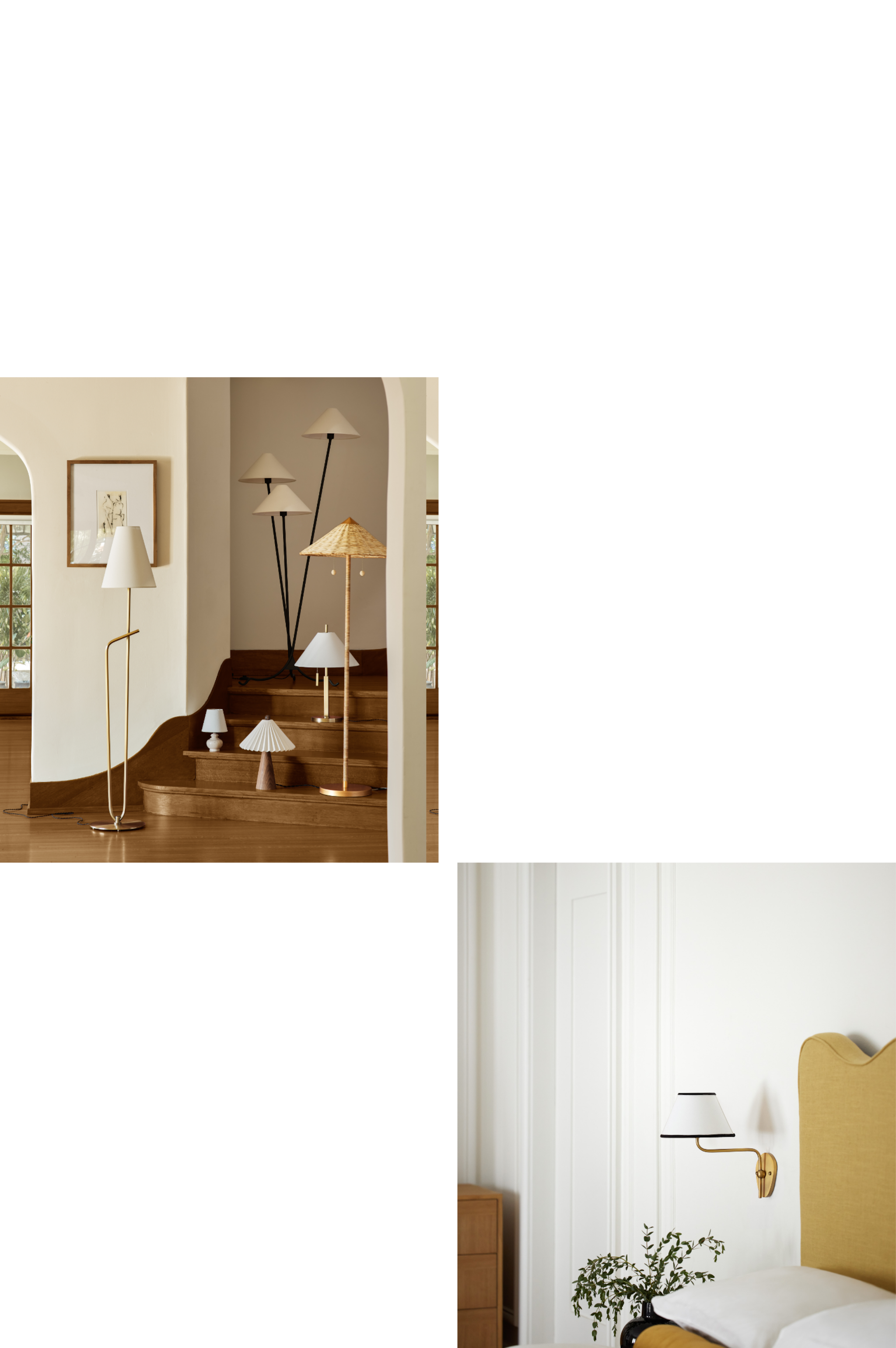
TABLE LAMPS AND FLOOR LAMPS
The most versatile type of lighting is the lamp. We use both floor lamps and table lamps in our projects. Floor lamps are used primarily in living rooms to add ambience. Table lamps can be used anywhere in your home. We always have at least one table lamp in a living room—we use them as bedside lights—we even love a table lamp in the kitchen or bathroom for a soft touch of light.
SCONCES
Sconces are a timeless way to add light and style to your walls. They are particularly useful in the bathroom as vanity lights, but we use them all over—as bedside lamps, over an entryway console, or in the living room or hallway for accent light. Sconces are especially great if you are short on floor space. We also love to use picture lights or directed sconces to highlight artwork or architectural features.

Ceiling lighting installed in the living room helps draw the eye up to make the room feel more dramatic. Usually, you want to install the light in the center of the room, but if you have a larger space, you may want to install multiples. For a ceiling that is 8’ high, a good rule of thumb is to install your hanging light at least 7’ from the floor. For taller ceilings, add 3” for every additional foot. The size of your fixture depends on the size of your space and the height of your ceilings. One quick trick for determining the size of a chandelier for your living room is to take the dimensions in feet, add them together, and convert them to inches—a 10’ by 12’ room would call for a 22” chandelier. If you can, install overhead lights on a dimmer switch so that you can adjust the ambience accordingly.
Table lamps and floor lamps are the most practical living space choices, as they help you direct light for a specific task. Place table lamps on your accent furniture, or use a floor lamp beside your favorite reading nook—their warm glow and direct light balance ambience and functionality. Floor lamps provide eye-level light, which counters the brightness of wall and ceiling-mounted fixtures. To create a relaxing space, we love using smart bulbs as an easy way to dim lightbulbs without a dimmer.
Wall lighting is a great way to add glow and ambience to the living room. What is helpful is that wall lights allow you to choose between wired and plug-in options. A plug-in sconce is especially useful in a rental home or apartment to avoid unnecessary electrical work. Using a wall sconce, you can fill out a part of the room that overhead lighting does not reach with a beautiful design element that brings the entire space to life. On the other hand, a picture light offers a directed glow to highlight wall art. We typically like to hang sconces 60”- 72” from the floor.
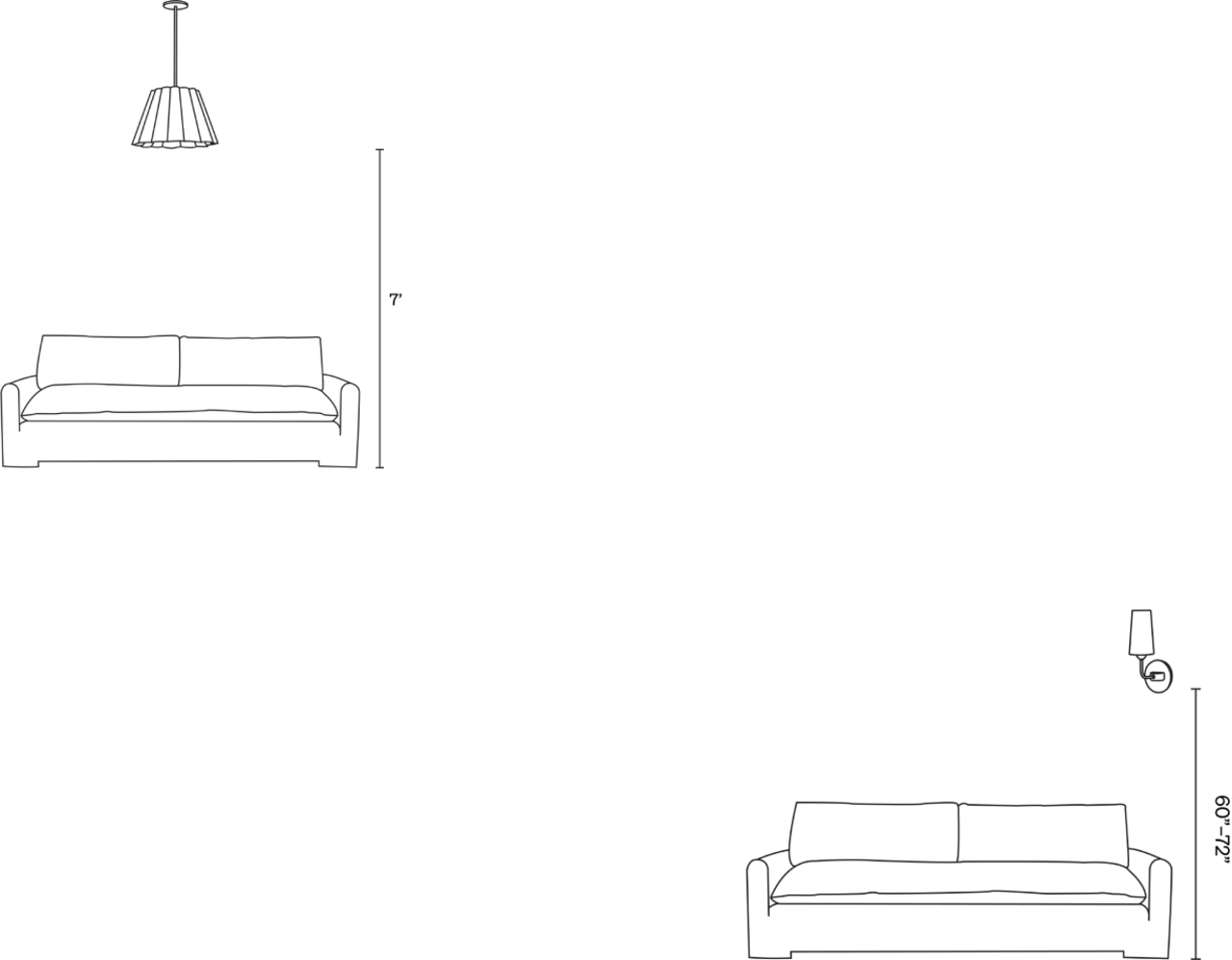
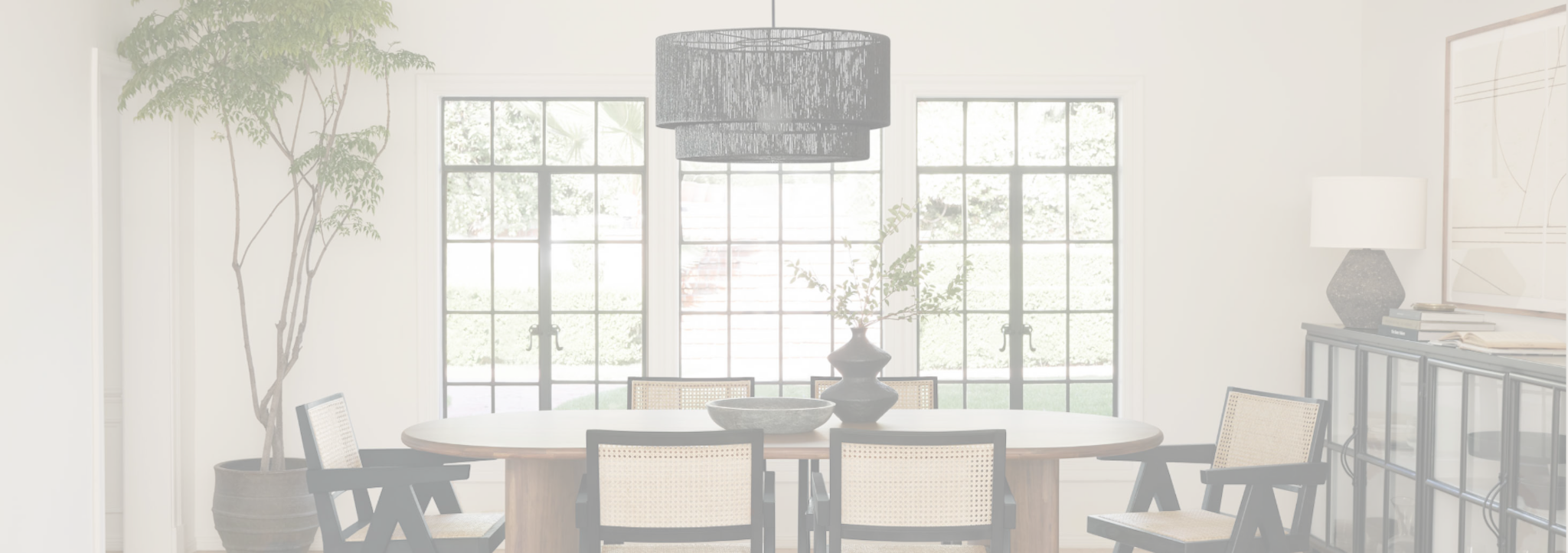
Dining Room Lighting
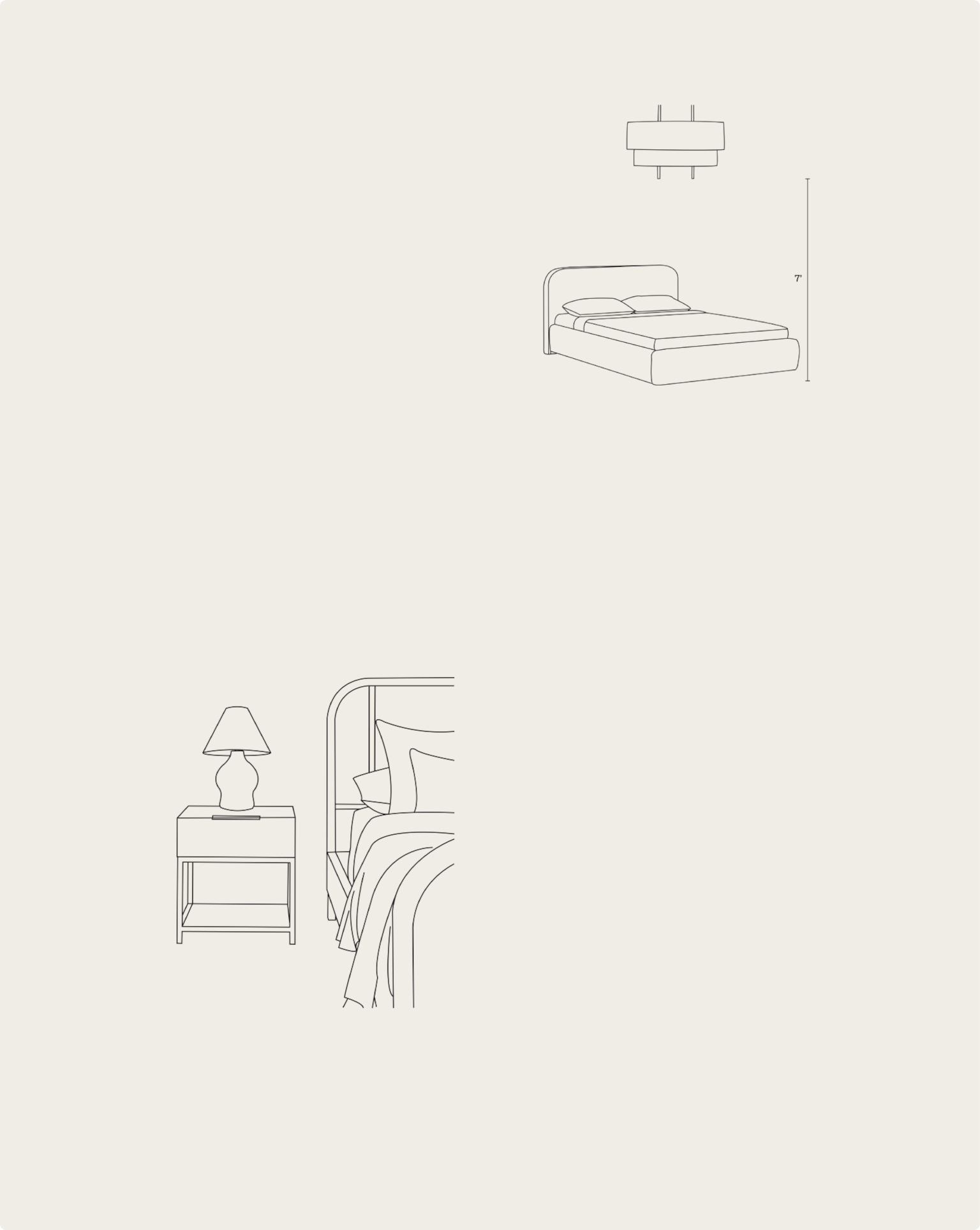
Bedside lighting can be varied based on your personal preferences and how much space you have. We use table lamps, scones, and even pendant lights as bedside lighting. If you’re using a table lamp, a good rule is that the base of the lamp should be ⅓ of the width of the nightstand. That way, you can still add other elements to the tabletop. A wall sconce or a pendant mounted above the nightstand should be hung about halfway the distance between the top of the headboard and the top of the nightstand. This should mean that they are below eye level when sitting up in bed so that you don’t have a glare in your eyes.

Ceiling lighting installed in the bedroom helps draw the eye up to make the room feel more dramatic. Most commonly, the light should be installed in the center of the room, but if you have a larger space, you may want to install multiples throughout the ceiling. For a ceiling that is 8’ high, a good rule of thumb is to install your hanging light at least 7’ from the floor. For taller ceilings, add 3” for every additional foot. The size of your fixture depends on the size of your space and the height of your ceilings. If you can, have your overhead lights installed on a dimmer switch so that you can adjust the ambience accordingly.
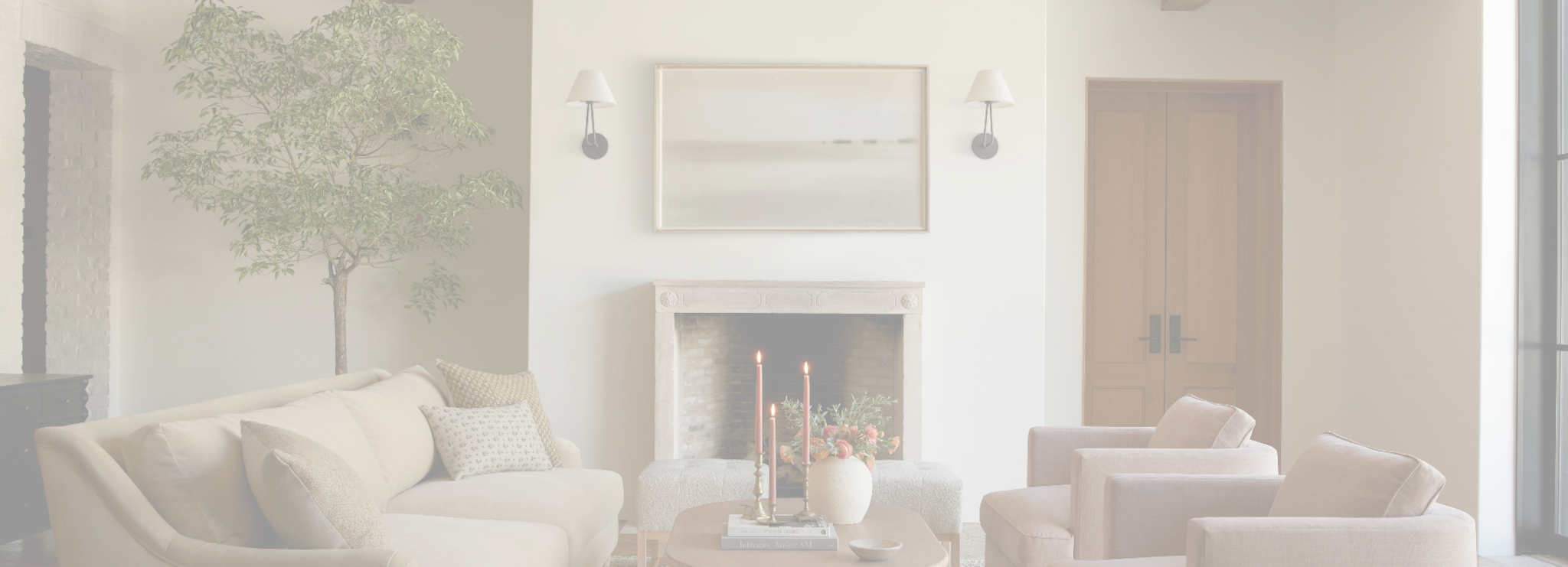
Glossary
Accent Lighting enhances the atmosphere by adding an extra glow or highlighting a feature as with a sconce or picture light.
Ambient Lighting encompasses overhead fixtures, such as flush mounts, chandeliers, and pendants, which provide general illumination to a space.
A candelabra bulb is smaller than a standard (E26) bulb and features an E12 base designed to fit into sockets of that size. They are typically used in chandeliers and some other decorative lighting fixtures.
Ceiling height is measured from the floor to the ceiling. This is important in determining how high ceiling fixtures need to be mounted to leave enough clearance below.
Cool Light is white to blue light with a bright appearance, great for task lighting in bathrooms, kitchens, or workspaces. Lighting temperature or the Correlated Color Temperature (CCT) is measured in Kelvins (K)—any light over 4000K is typically considered cool.
Damp-rated lights are designed and tested for use in areas with some moisture or humidity, such as a bathroom or an enclosed or covered outdoor area.
Dimmable means the lighting fixture can be wired to a dimmer switch, allowing you to adjust the brightness of the light. It's important to note dimmable fixtures require dimmable bulbs to function properly.
An Edison bulb features a clear glass enclosure that shows the warm glowing filament inside. The design is a reproduction of the original light bulb developed by the eponymous inventor over a century ago. Sometimes called antique or vintage bulbs, they are popular for their timeless look.
A finial is a decorative cap that fastens the shade to the lighting fixture, holding it in place.
A flush mount light is an overhead fixture that mounts directly to the ceiling rather than being suspended from a stem or chain as with a pendant. Their compact profile is great for spaces with a ceiling height below 10 feet. Semi-flush mounts combine the qualities of both styles, leaving a small gap between the ceiling and fixture for a more ambient effect.
A foot switch is a pedal with a simple pushbutton switch that lets you turn the light on or off by stepping on it.
Hardwired lighting fixtures are installed directly into the electric circuitry in your wall or ceiling. Professional installation is always recommended.
A harp is a wire frame that attaches to the socket on lighting fixtures to support the shade and protect the bulb.
A Kelvin (K) is a unit that measures temperature—which in lighting refers to the color temperature of a bulb. A lower number means warmer light, and a higher number means whiter light. Most household bulbs range from 2000K to 6500K.
LED stands for light emitting diode, and the technology's use in household lighting is relatively new. LED lighting has become increasingly popular in modern design as it is energy efficient and has a long life, making it more sustainable.
Made to order products allow you to customize specifications such as fabric color or type at the time of purchase. These products are built or finished once the order is placed, allowing you to tailor them to your home design.
Neutral light has a bright, neutral tone that is great for illuminating everyday spaces. Lighting temperature or the Correlated Color Temperature (CCT) is measured in Kelvins (K)—any light around 3500K is typically considered neutral.
Plug-in lighting fixtures can be plugged into any electrical outlet without being hardwired into your home. This is most common with lamps, but some sconces and even overhead fixtures feature plug-in designs.
A recessed light is housed in the ceiling and designed to be flush with the surface or feature a minimal trim. Recessed lighting is often used in modern design for a clean, streamlined look.
A rocker switch is a simple on/off switch with a seesaw-like design—one side is pressed down to turn on the light and the other side is pressed down to turn it off.
A rotary lamp switch is a rotating switch with a spindle that can be turned to different positions—often allowing you to turn the light to varying levels of brightness.
A surface light mounts on the surface of the wall or ceiling without any components housed inside. They can be installed in places where recessed lights cannot and often feature decorative designs. Surface-mounted fixtures include pendants, flush mounts, chandeliers, and sconces.
A swing arm is an adjustable arm on a lighting fixture that pivots for more direct illumination—typically seen on a sconce or lamp.
Task Lighting involves focused lighting solutions like reading lamps that serve a specific functional purpose.
A toggle switch is a simple on/off switch in which a lever moves between the on and off position.
Translucent simply means light can pass through the material. A clear glass shade is translucent, but a metal shade is not. Semi-translucent materials like linen or opal glass are often used for shades because they filter or diffuse the light for a softer, even glow.
A UL Listing is provided by Underwriting Laboratories, a non-profit that tests products for safety and sustainability. If a product is UL Listed, it has been determined to meet their standards. This also determines if the lighting fixture receives a dry, damp, or wet rating.
Voltage (V) measures the flow of the electric current to the lighting fixture. The voltage of your bulb needs to match the voltage of the fixture—most lighting fixtures in the US are 120V.
Warm light is amber to yellowish in appearance, creating a cozy ambiance. Lighting temperature or the Correlated Color Temperature (CCT) is measured in Kelvins (K)—any light under 3000K is typically considered warm.
Wattage (W) measures the amount of electric power a lighting fixture consumes. A higher-wattage bulb consumes more energy but typically will be brighter. Most spaces and fixtures call for 60-watt bulbs, though 25, 40, and 100-watt bulbs are available depending on the level of light needed. Never use a higher-watt bulb than the fixture allows as it can overheat and become a hazard.
Wet-rated lights are designed and tested to withstand most outdoor elements, such as rain and snow.
White Glove delivery is a comprehensive service for oversized or fragile items. The delivery is scheduled directly through the delivery service, the shipment is placed in your preferred room, and the delivery team assembles the product and disposes of any packaging materials.
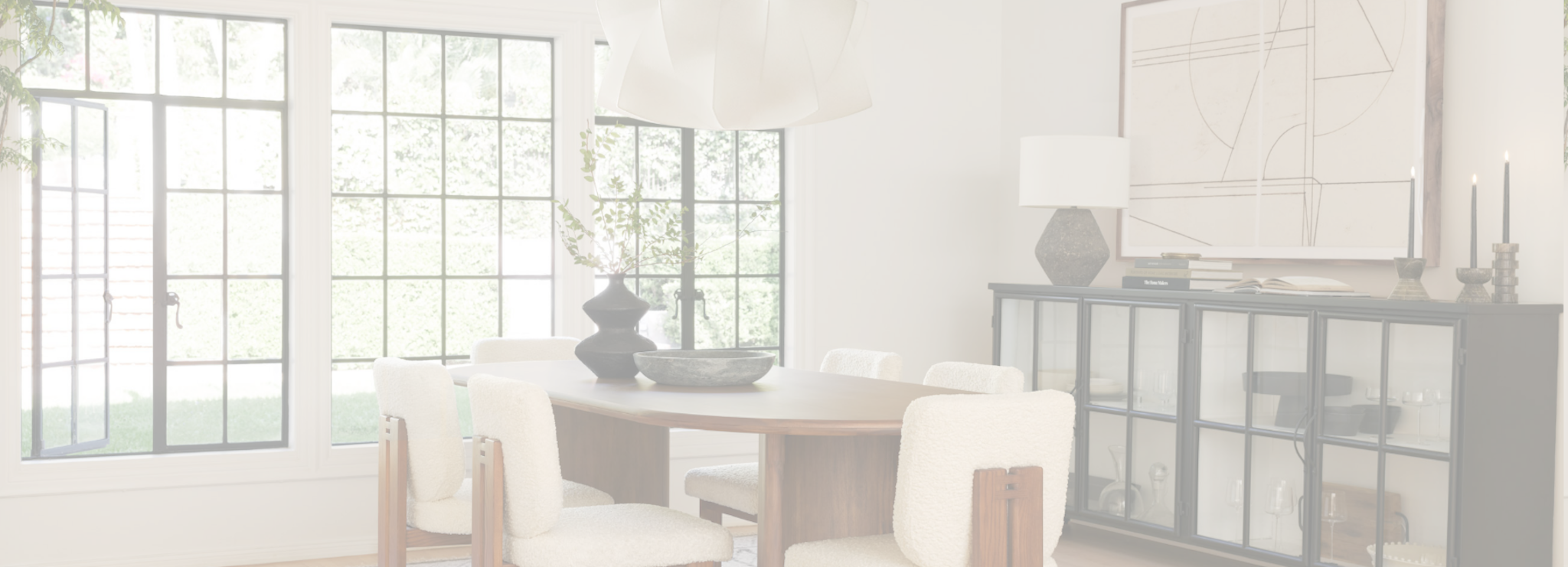
FAQs
What is the difference between damp-rated and wet-rated?
Damp-rated lights are designed and tested for use in areas with some moisture or humidity, such as a bathroom or an enclosed or covered outdoor area. Wet-rated lights are designed and tested to withstand most outdoor elements, such as rain and snow. Light fixtures intended for these locations must carry this rating for safe installation. These ratings can be found under product details and will typically be marked as UL Wet Listed or UL Damp Listed. A product will be marked as UL Dry Listed if neither applies.
What does UL or ETL Listed mean?
A UL Listing is provided by Underwriting Laboratories, a non-profit that tests products for safety and sustainability. If a product is UL Listed, it has been determined to meet their standards. This also determines if the lighting fixture receives a dry, damp, or wet rating. You may sometimes see an ETL Listing instead. An ETL Listing is provided by Electric Technologies Laboratories but is tested to the same standards developed by UL.
How do I install my light fixture?
We recommend professional installation for all hardwired light fixtures to ensure they are properly and safely installed.
Will my light fixture work on a dimmer?
Many but not all of our light fixtures can be installed with a dimmer switch. Each product will note if it is compatible with a dimmer per the manufacturer's information. This can be found under the details. Compatible lights will be listed as 'Dimmable.'
Check moisture rating First, make sure the product can be safely installed in the intended location. For a powder room, bathroom, or covered outdoor area, lights must be damp-rated. For outdoor installations or any area where the light may come into direct contact with water, the light must be wet-rated. This information can be found under product details.
Check your space Next, take into account your outlet and lighting placement. For overhead fixtures, ensure there will be enough clearance underneath once mounted. If you’re not replacing an existing fixture, make sure the light can be hardwired or is near an outlet if a plug-in wall sconce.
Arrange for professional installation We recommend professional installation for all hardwired fixtures. Contacting a professional before you purchase lets you ensure the light fixture can be properly and safely installed in your home.
What to expect on delivery day Due to carrier shipping constraints, we’re facing extended shipping timelines on many items of up to 14-18 business days. In some cases, there will be a delay from when your shipping label is created and when FedEx actually picks up the item from our warehouse. Additionally, some items are subject to further processing lead times, so please refer to the individual product pages for the most up-to-date information. Items ordered together may not arrive in the same box. We are unable to ship to P.O. and A.P.O. boxes. Once delivered, please report any damages or other customer inquiries 48 hours after delivery. For more information, including shipping rates and other details, please visit shipping and returns here.
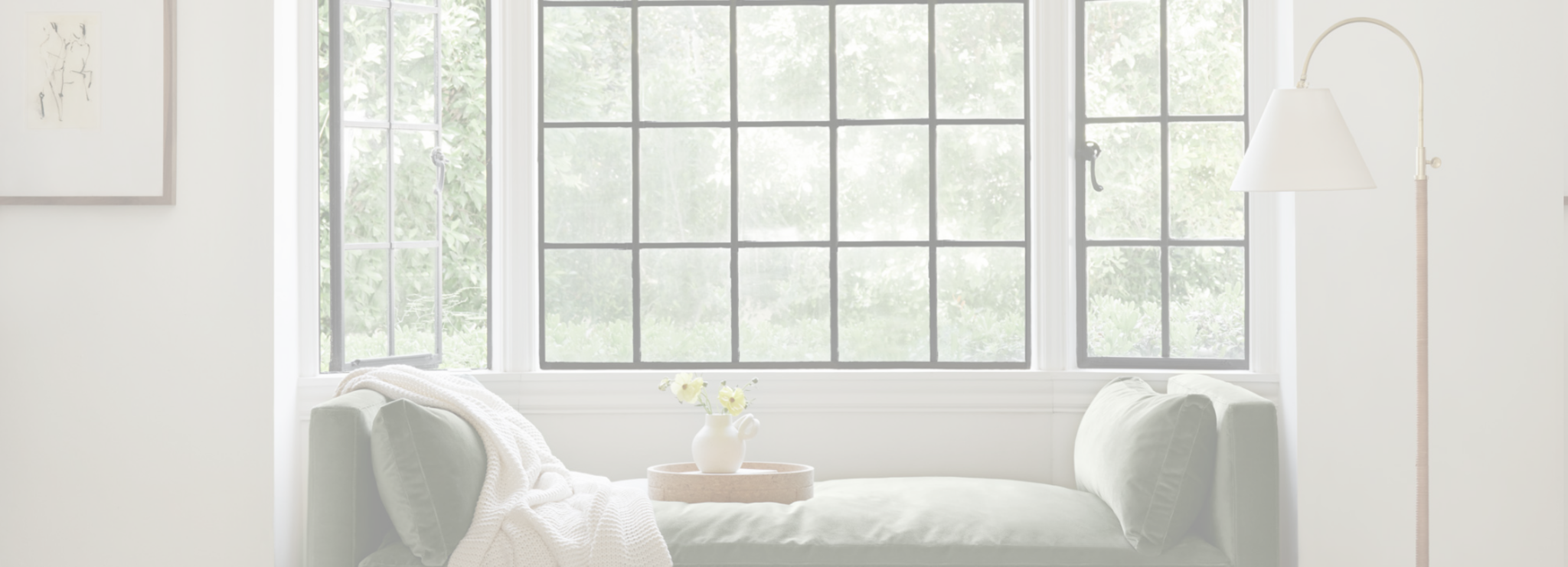
Before you Purchase
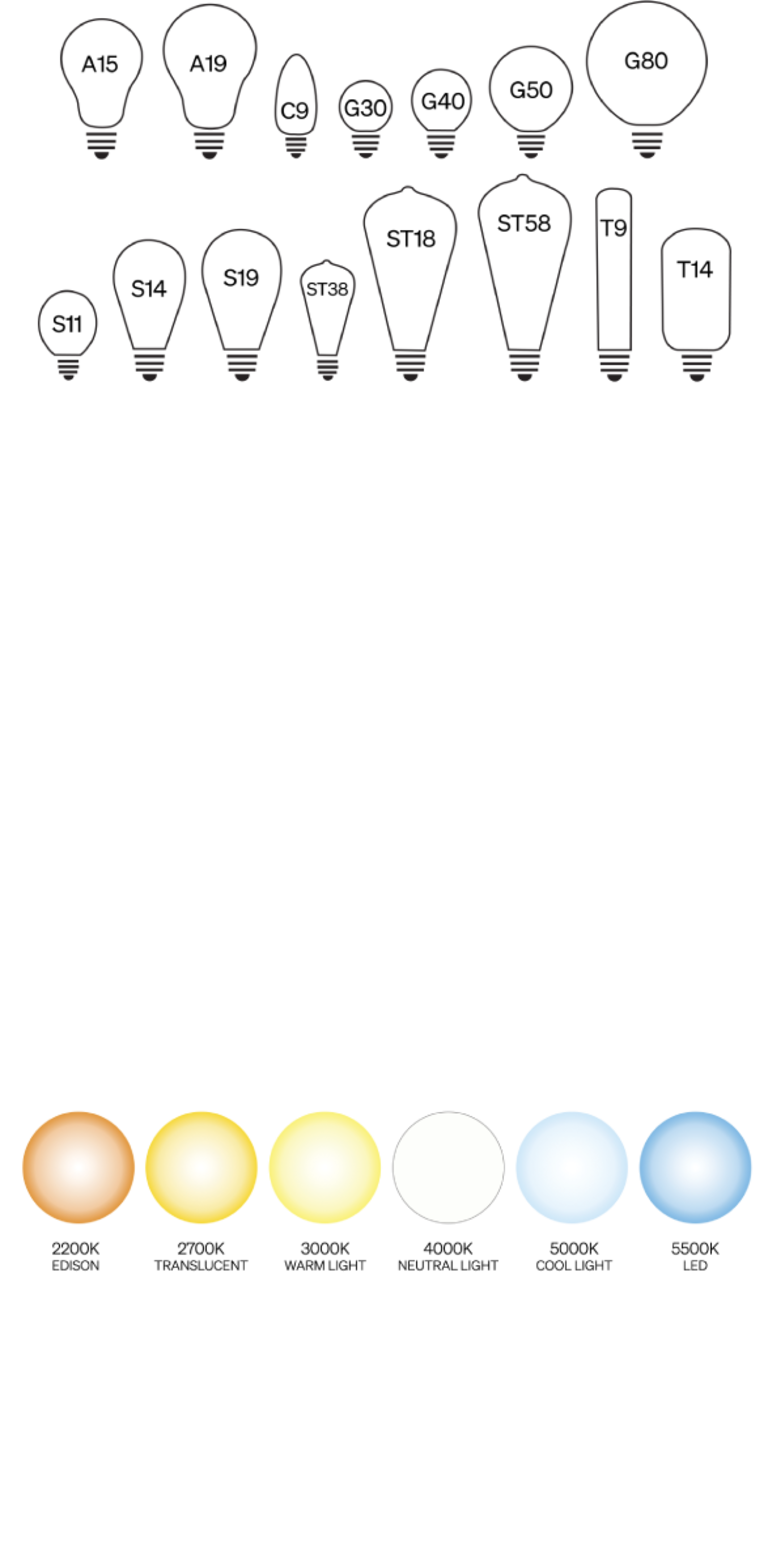
Sometimes, it’s the details that catch us up. Once you’ve decided on your light fixture, finding the proper bulb can be overwhelming. No worries, here are a few simple tips to keep in mind as you shop for light bulbs.
LED stands for light emitting diode, and the technology's use in household lighting is relatively new. LED lighting has become increasingly popular in modern design as it is energy efficient and has a long life, making it more sustainable.
Socket Type: One thing that’s always important to note is the socket size or base of the bulb—whether it will fit into your light fixture. There are many types of sockets, but two you want to keep in mind are the medium or standard base bulb, also called an E26 socket, and the candelabra base bulb, or an E12 socket. Most fixtures and lamps around your home will take the standard base, but chandeliers—and some lantern pendants, sconces, and mini table lamps—have candelabra sockets. You can always find this information listed under the product details.
Kelvins and Lumens: Kelvins refer to the color temperature of the lighting—warm or cold—and lumens refer to the brightness output of the light. A higher kelvin temperature with more lumens offers a cool, bright light. A lower kelvin temperature with fewer lumens will be a dimmer, warm glow. Though cool lights tend to appear brighter, it’s important to note that kelvin and lumens are not correlated—you can have a warm, bright light or a cool, dim light.
That can seem technical, but proper lighting is an art form, and these metrics help define your palette. Bright, cool light can help inspire a clean, productive feel—ideal for getting ready for the day or focusing on food prep. In a bedroom, that softer warmth can be essential to curating a restful environment. Hallways might call for more balanced lighting to create a less jarring transition between spaces.
Lighting can also play into the aesthetic and mood—bright light feels modern. If you’re going for something vintage-inspired in a study or lounge, consider using lower kelvin temperatures with fewer lumens to augment the effect. Good design withers in bad light.
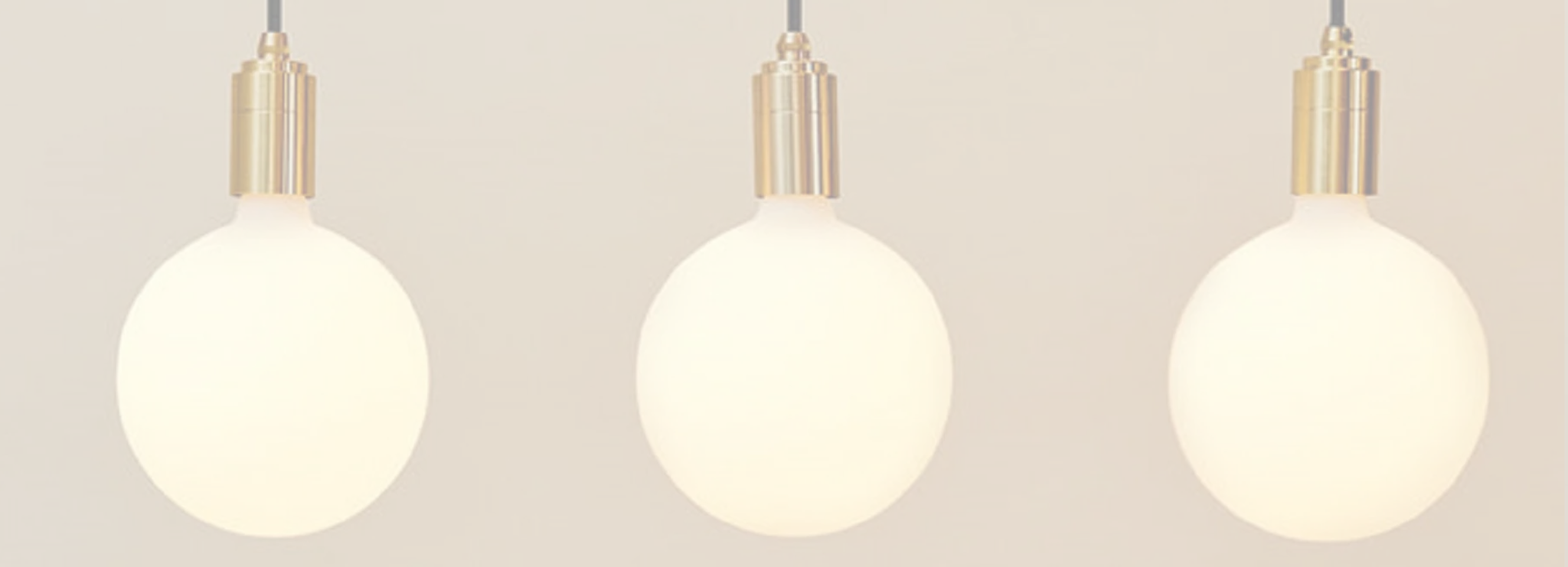
Let’s Talk About Lightbulbs
Outdoor Lighting
Just as in the bathroom, it’s important to note that fully exposed outdoor lighting needs to be wet-rated or and covered outdoor lighting needs to be damp-rated. Always consult a professional before installing.
Sconce lighting is the classic way to elevate the aspect of your home. Again, sconces should be mounted just above eye level, providing ample light without shining directly in your eye—you have a little more leeway outside with height, but you want the lights to be about ¼ to ⅓ down from the top of the door to avoid an awkward look. Barn lights can be a stylish addition and an indispensable safety feature over a garage door or outbuilding entrance—they should be sized about ¼ to ⅓ the height of the door and mounted 12” above it.
Overhead lighting can come in the form of hanging lanterns, pendants, or even chandeliers. There isn’t a single rule for hanging lights outside. At the front door, the design consensus is that the fixture should be about ⅕ the height of your door and be mounted centrally just above the door. If it’s a pendant or chandelier for a covered outdoor dining area, follow the same guidelines as you would for a dining room—styling to the table. Outdoor ceiling fans with lights offer added functionality— perfect for keeping cool under a covered or enclosed area.
Kitchen Lighting
Kitchens are the heart of your home, a social space for everything from baking together to doing homework or having a glass of wine while cooking.Overhead lighting is typically your primary light source in a kitchen—how bright or dynamic your kitchen lighting needs to be depends on the use and layout.
If you have an island, we like to hang pendant lights above for a softer ambience. Hanging lights should be at least 30” to 36” above any counter so they’re not in your eye-line and 24” to 30” apart when styled in multiples. As with tables, leave at least 6” between the light and the edge of the counter or island. In a small-space galley kitchen, compact overhead lighting like flush mounts can be useful.
Accent lighting and well-placed task lights can help you adjust the room throughout the day. LEDs are often installed under cabinets for an added touch of light with low visual impact. We love to add a lamp to a corner of the kitchen so that when you’re done for the night, you have a bit of a glow in the space.
Bathroom Lighting
The bathroom is another place where you want more task-focused lighting. Keep in mind that for bathrooms with baths or showers lighting needs to be damp-rated or wet-rated. Whether a fixture is suited for bathroom use can be found under the product details—always consult a professional before installing.
Ceiling lighting can offer a great source of ambient and task light to the bathroom. Flush Mounts, pendants, or chandeliers can all work. The important thing to consider is that bathrooms are often smaller spaces with plumbing fixtures. Hanging lights need to be at least 8’ above the top rim of the bathtub—or 3’ away from it. If you’re hanging pendant lights over a vanity or mirror, you want the top of the light to be just above the top of the mirror or about 30” to 36” from the ceiling.
Wall sconces save space and allow plenty of task lighting for your self-care ritual. Vanity lighting should be placed about 60” to 72” from the floor. The idea is to cast light just above eye level so there are fewer shadows when facing the mirror.
Entryway Lighting
Depending on the size of your entryway, we like to use overhead lighting that adds some drama to the reception, such as a chandelier or pendant—as space permits. If you’re going for that statement appeal, go as big as the space will allow. A large chandelier or pendant can help define the area.
A hanging light should be at least 7’ off the ground and centrally placed—inviting you in and catching the eye. If you have a smaller entryway, a compact but stylish pendant or flush mount can still catch the eye—or a series of pendants spaced evenly or placed at either end for an entry hall.
Accent lighting fills out the space. If you have a console or entryway table, a table lamp is the perfect way to evoke a warm, inviting atmosphere—a table lamp should be about 30” to sit at the proper height on a 30” console table. Another option is to flank the entryway table or some other point of interest with a pair of sconces. As in any hall or lounge, entryway sconces should be just above eye level and at least 6’ apart.
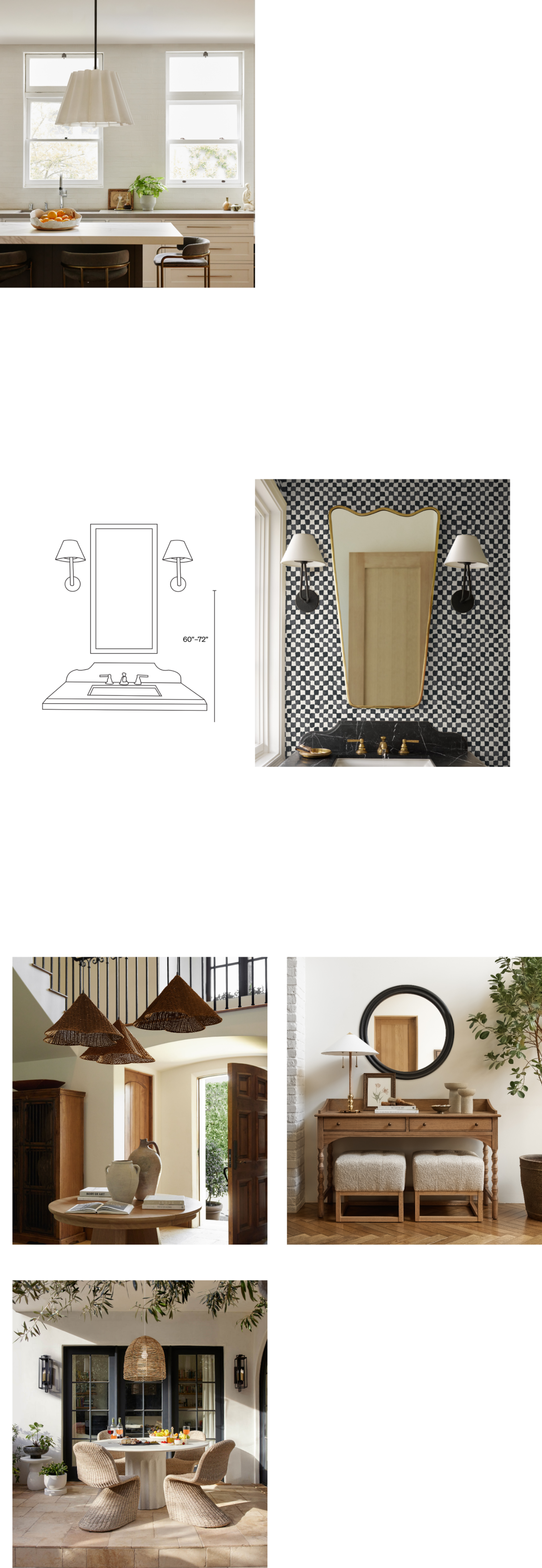
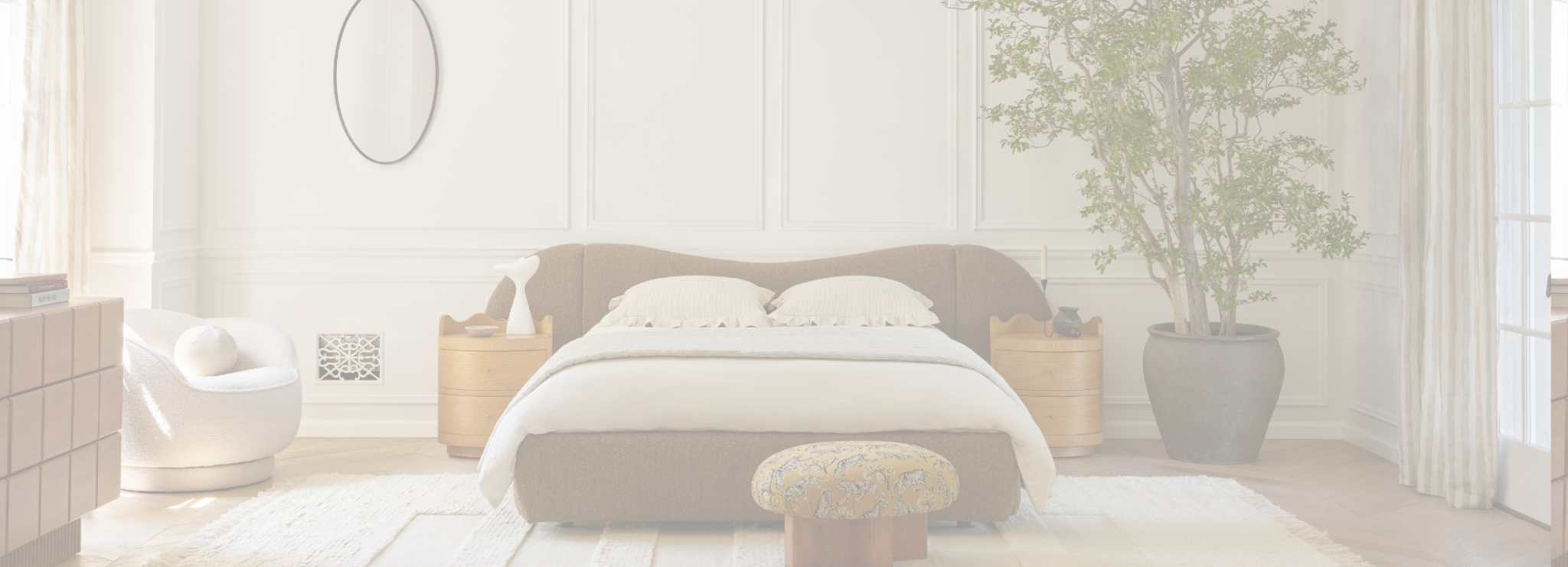
Bedroom Lighting

Throughout the Home
The size and shape of your dining room and table determine which type of hanging lights or other lighting will be best for your space. We will explore a few popular options below. Another essential factor is how the room feels when you turn on your ceiling light. The light may be softer or brighter depending on whether the bulb is exposed or shaded and what direction the light faces. Many overhead lights can be installed with a dimmer switch so that you can adjust the ambience accordingly—this can always be found under product details.

Living Room Lighting

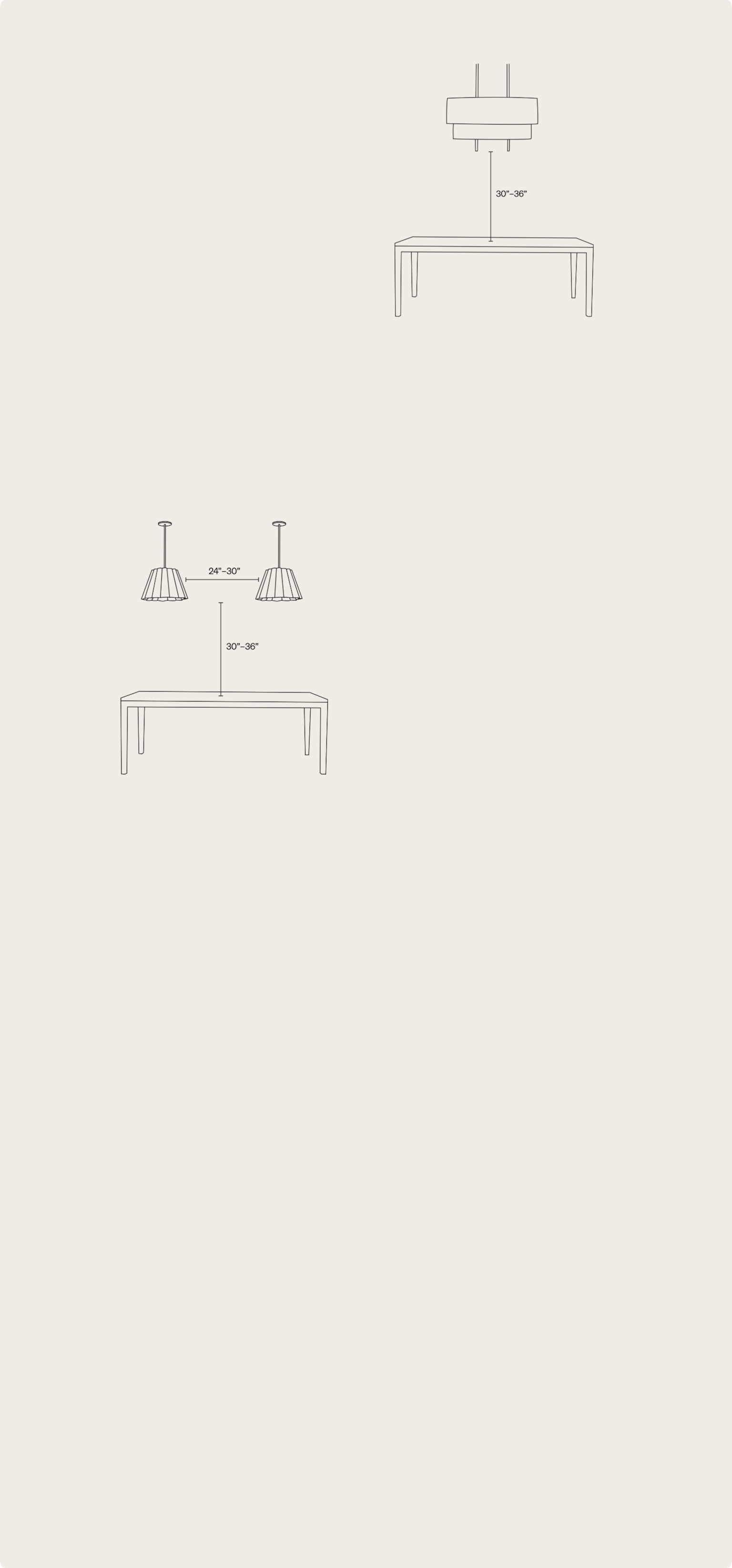
You can also opt for two smaller pendants to be hung above the table. The same rules apply when figuring out how high to hang your pendants as they would for chandeliers. Just space your pendants at least 24” to 30” apart and hang your fixtures 30” to 36” above the tabletop. Allow for 6” of space from the edges on either side of the table.
Whether you have a separate breakfast nook with a bistro table or a small-space kitchen and dining area, it's nice to feature a ceiling light above a round dining table. When hanging a smaller pendant, you want the diameter of the light fixture to be ½ or ¾ of the diameter of the table. Again, for 8’ ceilings, you want to hang your fixture 30” to 36” from the tabletop to the bottom of the light. For taller ceilings, raise the fixture by 3” for each additional foot. Lastly, if you want to keep your overhead light as minimalist as possible—or if you have lower ceilings—a flush mount offers a compact profile for a cleaner, more pared-down look.
Dining Room Accent Lighting
Sconces and lamps are a great way to add glow and ambience to the dining room. With wall sconces, you can provide a beautiful design element that brings your entire room to life. We typically like to hang sconces 60”- 72” from the floor. Additionally, the warm glow and direct light of table and floor lamps balance ambience and functionality. To create a relaxing space, we love using smart bulbs as an easy way to dim lightbulbs without a dimmer. Or pick up a few candlesticks for a timeless dinner party feel.
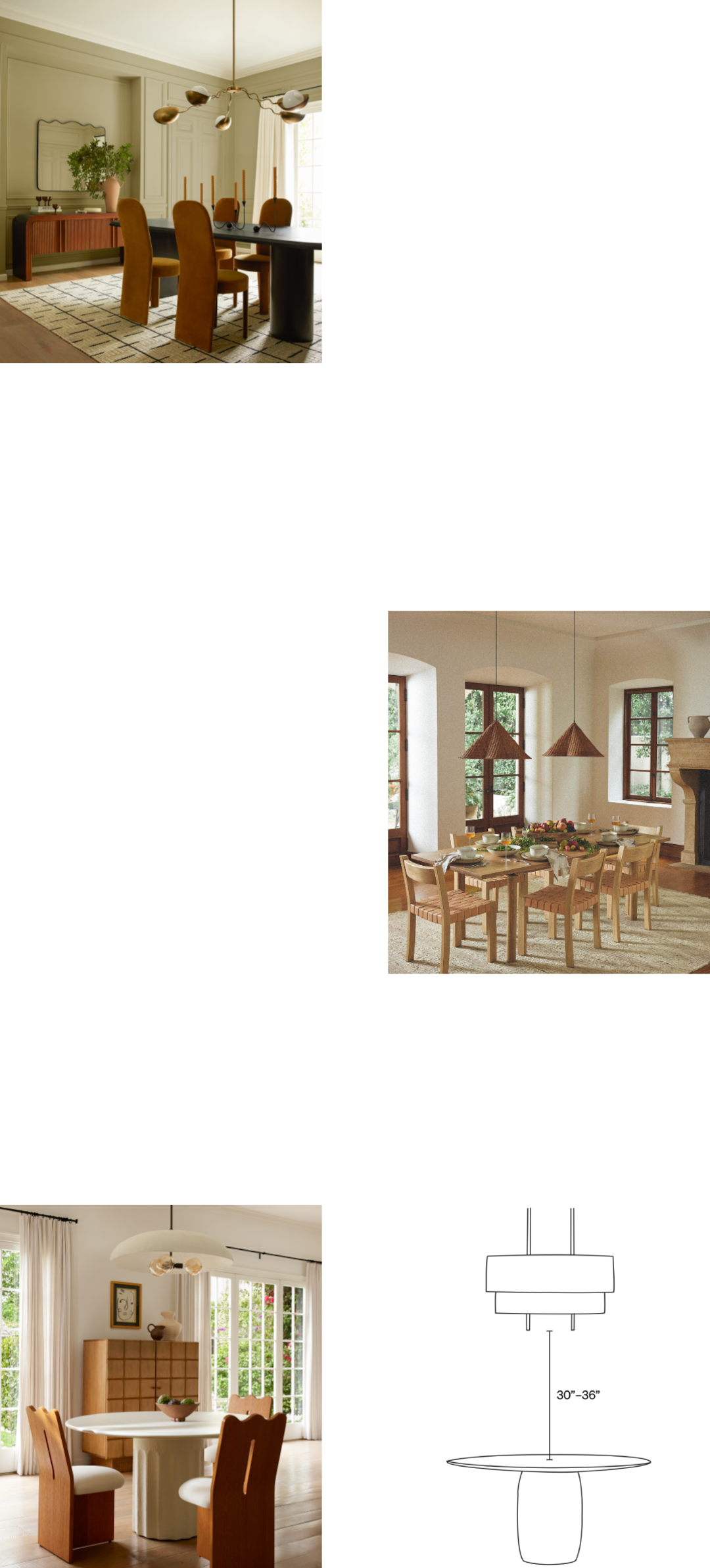
In a formal dining room setting, a chandelier or large pendant light is best over a long rectangular or oval table to help add some drama and weight. If you have an open-concept space, these larger fixtures help define your dining area when highlighting your table. Start by measuring the length of your dining table. A good rule of thumb when determining how high to hang a light above a table is that the width of your fixture is at least 6” in from the edge on both sides of the table. For 8’ ceilings, you want to hang your fixture 30” to 36” from the tabletop to the bottom of the light. For taller ceilings, raise the fixture by 3” for each additional foot.